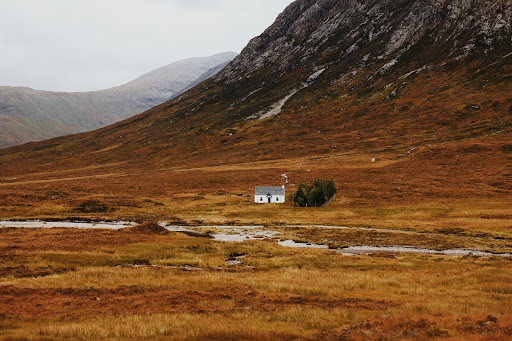The West Highland Way is a spectacular path that has gained popularity through its beautiful scenery, rich history access, and the satisfaction that comes with a good hike. So, whether it is hiking you’re into or merely strolling, the trail is perfect for any kind of enthusiast, and this is why people from different parts of Scotland love it.
The highlight of West Highland Way eagerly awaited and at the same time dreaded, is undoubtedly the terrifying yet delightful Devil’s Staircase. It is perhaps the most challenging and most famous section of the route. This popular climb is located between the village of Kinlochleven and the rather secluded King’s House in Glencoe.
The Devil’s Staircase not only tests physical endurance but also offers hikers a chance to experience the raw beauty and isolation of the Highlands.
Myth?
The Devil’s Staircase may be just a myth, but their name certainly creates a spooky aura. It may come as a surprise, but the term did not originate from the challenging steep climb. It can be traced back to its actual construction as a military route that dates as far back as the early 1700s. After the Jacobite Rebellion, British officers undertook the building of roads as a means to dominate the Highlands. One such path was a steep zigzagging path that we now know as the Devil’s Staircase.
The path was given such a sinister name in the 18th century after soldiers transporting goods on the steep slopes reportedly renamed the path after the Devil, cursing the gradient. They were supported later on by workers in the construction of the Blackwater Dam in early 1900. This was a treacherous and physically arduous journey where they had to walk from their lodgings at Kinlochleven up the steep Devil’s Staircase to get to the dam. Some of them died from the encounter with a very hard winter that escalated the climb to infamy.
The Devil’s Staircase is a steep, zigzagging climb that takes you from the village of Kinlochleven, situated at sea level, up to a high point of 550 meters (1,800 feet) above sea level. It’s a test of physical and mental endurance, especially for those who have already walked many miles by the time they reach this section.
The Approach
From Kinlochleven, the route passes through a wooded area for some distance before the climb starts steadily through moorlands. If you continue adding altitude, then the rocks grow larger, cliffs start to appear, and the trail is not very wide. The initial portion of the staircase has a less inclined zigzag pattern but when you are halfway down the trail the real stoke begins in the form of a steep zigzag pattern.
Although this section is not long, many hikers lack enough energy to move on if the weather is bad. The route is open-air, and everything – gusts, precipitation, or sleet – can turn the climb from a difficult to a strenuous endeavor. But on a clear day, it is quite rewarding as the scenery increases in grandiosity as you make your way up the cliff.
The Climb
The switchbacks of the Devil’s Staircase are less steep and offer some reprieve for hikers to take on the climb in stages. Nevertheless, it is not an easy task, especially for those who may have been trekking throughout the day. As for the technicality, there are some parts of the trail made from large rocks arranged closely together, and after the rain, it becomes slippery, so the hikers have to be careful with every step.
Most hikers are generally relaxed, using shuffling movements to save energy and taking breaks to rest and admire the beauty of the valley below. The climb is rather steep, but the point is made that there is a progression with each zigzag made. As days go by and the summit approaches the morale of conquering the notorious hike starts to overshadow the physical exhaustion.
Reaching the Summit
Arriving at the top of the Devil’s Staircase is a wonderful feeling for any hiker. At 550 meters a person is actually at the highest point of the entire West Highland Way. The view is stunning here. To the south lies Rannoch Moor, a great expanse of barren moorland, and to the west, the impressive ridge of the Mamores. This may be the most striking view of all, especially the pyramid-like Buachaille Etive Mòr in front to the north.
It is common to find hikers resting and taking a break at the summit with beverages and some snacks. That is why many sit down on the benches here and, having eaten their fill of sandwiches, they relax and gaze at the surrounding landscapes. The feeling of accomplishment is as clear as crystal – after all, you have just won the battle of one of the most iconic parts of the West Highland Way!
For seasoned walkers or those intending to trek through the West Highland Way, it is crucial to prepare appropriately for the Devil’s Staircase. Take only what you need but for a variety of climates because in the Highlands, the weather conditions may change at any time. A good quality waterproof jacket, more clothes because it gets chilly as you go higher, and proper hiking shoes with good support around the ankles should be worn.
Conclusion
To conclude, the Devil’s Staircase represents the natural character of the West Highland Way area and the effort called for when traversing the path. It’s one of the most beautiful places in the world. The hike is tough and challenging but the physical effort to get to the summit is well worth the breathtaking beauty of the Highlands seen at the summit.

